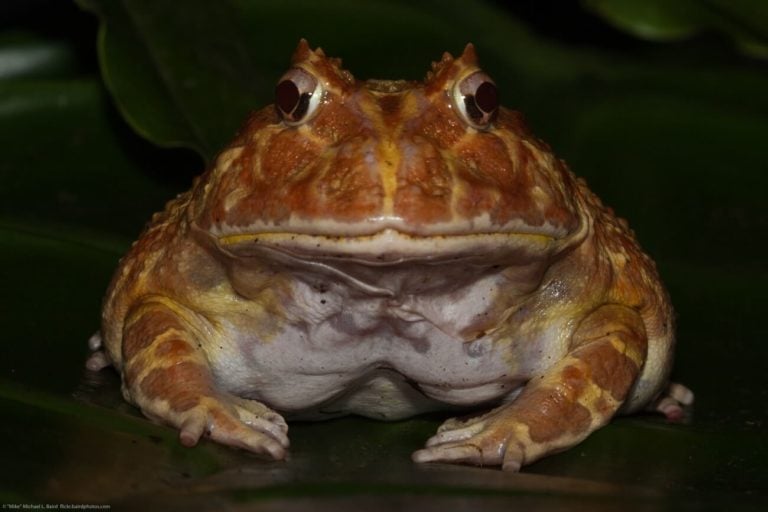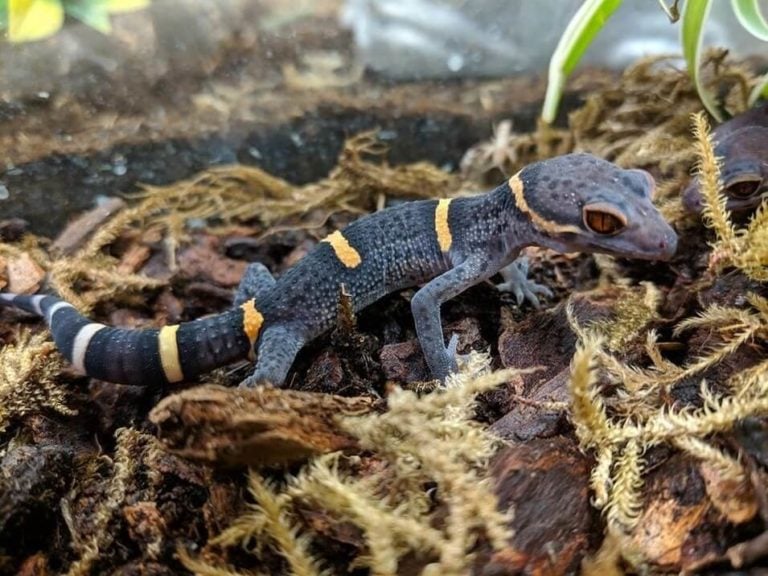Leopard tortoises are stunning reptiles that stand out in a crowd. These pets are not only beautiful to look at, but a joy to own.
With their long lifespan and peaceful nature, many herp-lovers have been drawn in by this unique species.
But leopard tortoise care is harder than it seems. Certain conditions need to be met with their enclosure, habitat, and diet if you want them to be healthy.
To make things easy, we made this in-depth guide to teach you everything you need to know (plus some bonus facts).
Table of Contents
Species Summary
Docile and very personable, the leopard tortoise (Stigmochelys pardalis) is a reptile that can bring decades of joy to the right owner. These tortoises are the fourth largest in the world, and they sport a beautiful shell to boot!
Originally from Eastern and Southern Africa, leopard tortoises inhabit savannahs and grasslands. There, the tortoises have a constant supply of food to graze on all day long.
This species can be a handful to take care of. Their care requirements are distinct and more demanding than other tortoises. However, the hard work is well worth it to watch these reptiles flourish!
Appearance & Colors
The leopard tortoise gets its namesake from the gorgeous look of its shell. On juveniles and young adults, the individual scutes feature black spots and blotches. The pattern is set on top of a base color of light brown or tan.
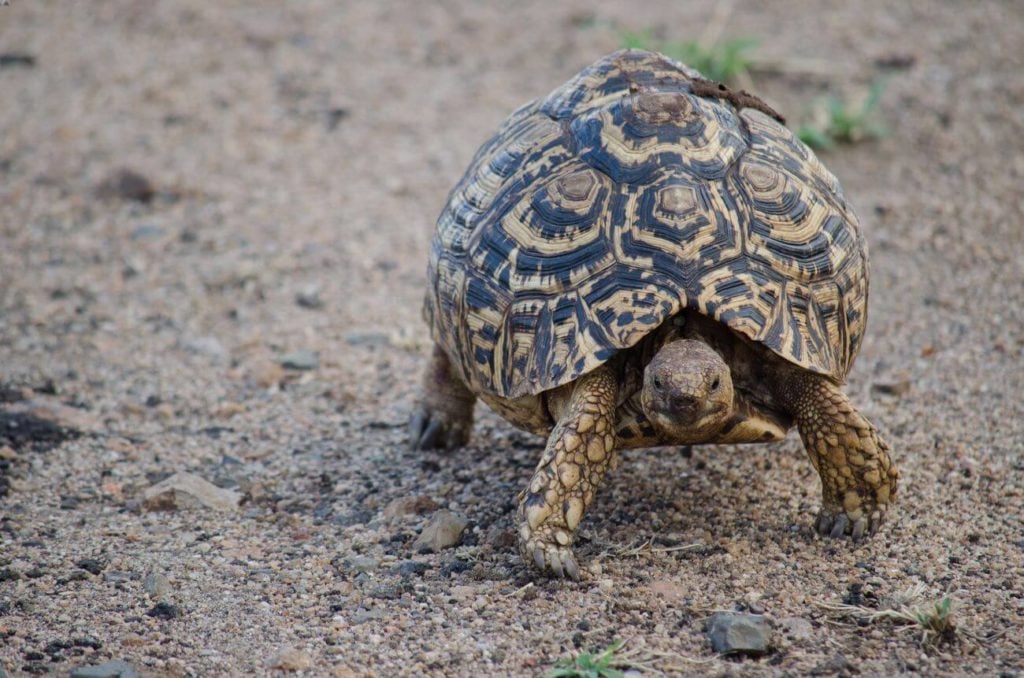
Some specimens may also have scutes with black edges. Whatever the case may be, this unique color pattern resembles the spots of a leopard.
Interestingly enough, the coloration is only found on juveniles and young adults. As the tortoises get older, the black fades and the shell takes on a more uniform brown color.
In terms of shape, the tortoise is quite tall. The carapace is domed and features steep sides. The head and limbs are covered in thick protective scales of tan, yellow, or brown.
Average Leopard Tortoise Size
The average leopard tortoise size is somewhere between 10 and 18 inches when full grown. They have a moderate growth-rate and can weigh upwards of 29 pounds.
Expert Tip: It’s worth pointing out that size can vary quite a bit based on the subspecies and geographic variations.
The tortoises that come from areas around Ethiopia and Somalia can get much bigger. These ones will reach lengths of 30 inches and can tip the scales at roughly 88 pounds!
Lifespan
The typical lifespan of a leopard tortoise is usually at least 50 years when kept in captivity. However, there have been plenty of situations where these reptiles live to reach 100!
This means if you’re thinking about owning a leopard tortoise, you need to be prepared for the long haul. Assuming you provide them with proper care, you’re going to have them for quite a while!
Of course, many factors will impact your leopard tortoise’s lifespan. The two main ones are genetics and the quality of care over time.
A well-cared-for tortoise obviously has a great chance of living for quite a while. On the other hand, poor care and living conditions can result in disease (which could end their life earlier than the 50 year mark).
Leopard Tortoise Care
Leopard tortoise care is best for those who have some experience owning similar pets. They are not the easiest animals to keep, as their large size and environmental needs can be a handful.
That said, the job isn’t as difficult as it sounds if you know what you’re doing (and what you’re getting into). A bit of knowledge can go a long way with an exotic pet like this.
The following sections contain the most important guidelines you can follow to give your leopard tortoise the best life possible.
Enclosure Size
One of the biggest challenges you’re going to face is creating a suitable enclosure. Leopard tortoises are best kept outside if you live in a warm climate. Owners in cooler environments can still house them, but they require a large enclosure.
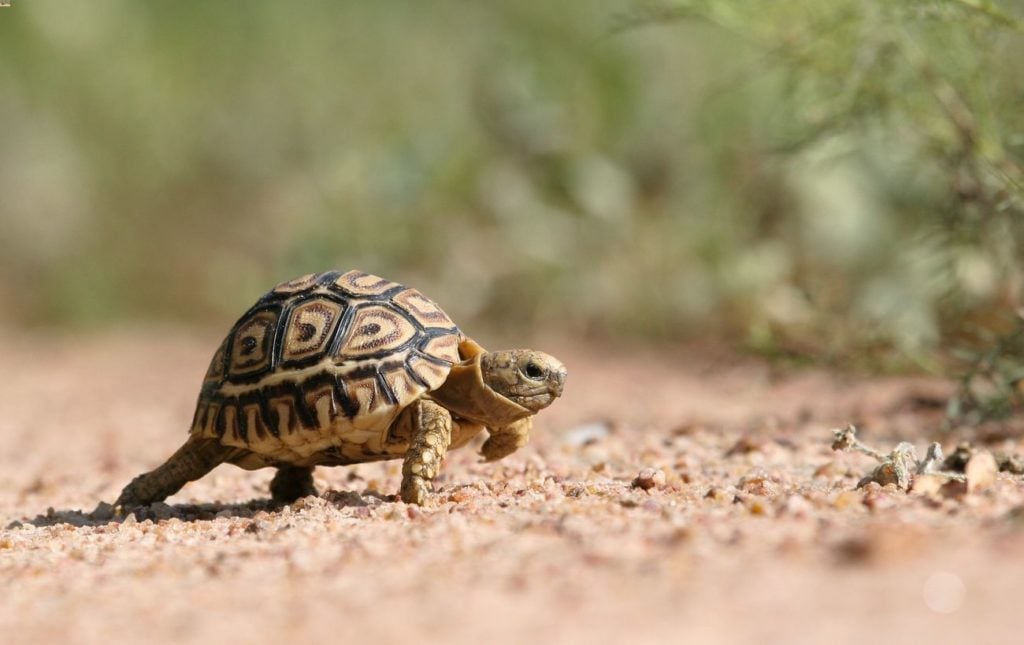
If you plan on keeping them outside, you need a pen that’s at least 10 feet wide by 10 feet tall. The walls need to be made out of solid material like wood or stone. Walls should be at least 2 feet tall and have no holes or slats the tortoise can see through.
The good news is that these tortoises don’t climb. The only time they will burrow is when they are laying their eggs. So, you don’t have to worry about escape attempts. But, you do need to think about keeping your tortoise safe from potential predators.
Inside enclosures must be big, too. At the bare minimum, these tortoises need an indoor pen that’s about 6 feet long by 4 feet wide and 1.5 feet tall. That’s suitable for winter housing.
If you want to keep the tortoise indoors all year long, we recommend going with something much larger. To truly thrive indoors, the leopard tortoises need at least 50 square feet of floor space.
Expert Tip: Many owners choose to set up their leopard tortoise enclosure in a spare bedroom or shed. But you can do whatever works best for your living situation!
Habitat Setup
Leopard tortoises aren’t super picky when it comes to their habitat. However, there are a few things that they require.
For starters, the substrate should be natural and comfortable.
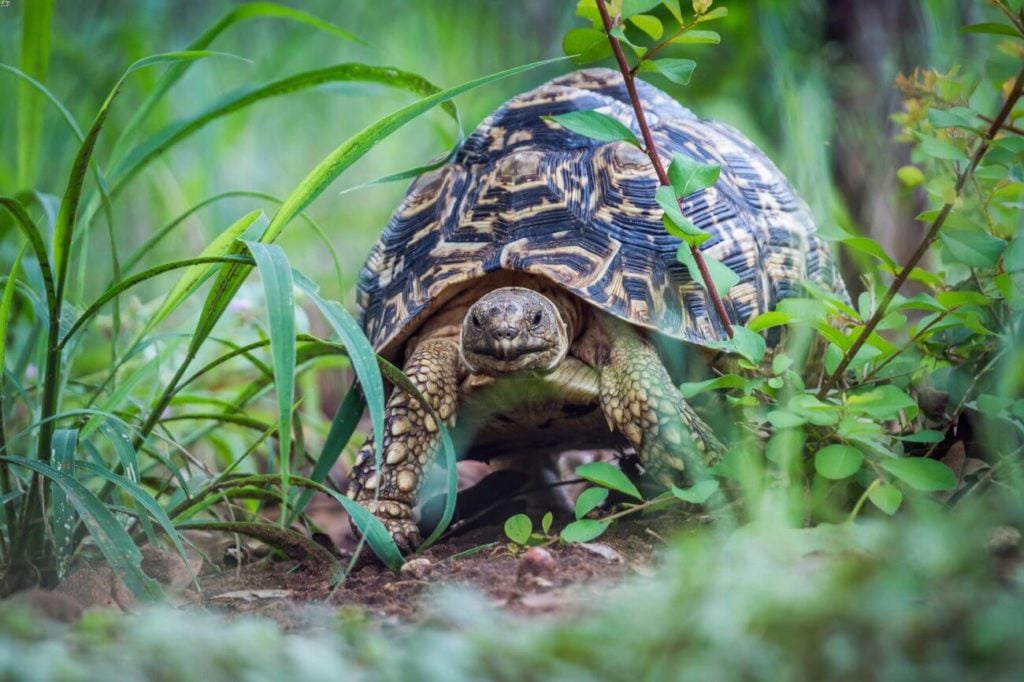
In outdoor pens, basic soil and some grazing grass are perfect. A nice bed of Bermuda grass, rye, and fescue sod are great. Leave a few grassless spots as well so that the tortoise can dig when they want to lay eggs.
For temporary indoor enclosures, you can use disposable substrate materials like newspapers. Reptile carpet works great too.
However, we recommend using a more natural substrate for permanent setups. An organic soil and sand mix with some natural grass and hay work well.
In outdoor enclosures, you can add some natural shrubs, trees, or bushes. They offer some protection against the elements and make the tortoise feel more secure. Choose non-toxic plant varieties that work in your climate.
Hide boxes are essential as well for indoor and outdoor enclosures. This will help your leopard tortoise feel safe and secure. The hide box must be big enough for your tortoise to get inside without any issues.
Temperature & Lighting
Leopard tortoises love hot temperatures. They are cold-blooded animals that must thermoregulate.
If you’re planning an outdoor pen, make sure that it’s in full sun! They do not tolerate cold weather. Average daily temperatures between 80 and 90 degrees Fahrenheit are ideal. At night, temperatures can dip to 65 degrees without any problems.
Inside, you must replicate those temperatures to keep your tortoise cozy. But, you also have to make a temperature gradient.
Here are the numbers to remember:
- Aim for ambient temperatures around 80 to 90 degrees Fahrenheit.
- Use a basking light to raise the heat in another area to 95 degrees Fahrenheit.
Expert Tip: Indoor tortoises will also need UVB exposure. Install a full-spectrum UV light to shine on the entire pen. You may need a couple to cover the entire area. Keep it on a timer so that it runs for 10 to 12 hours every day.
Humidity
Humidity levels are equally important to leopard tortoises. These reptiles need a relative humidity of 40 to 60 percent during the day, and in the 70 to 80 percent range at night.
To raise humidity levels, you can spray the enclosure down a bit. Misting systems work well, too. Make sure to mist around dusk so that the humidity levels rise for the night.
We recommend getting a hygrometer to test humidity levels regularly. Don’t go bargain shopping with this, you want your hygrometer to be as accurate and reliable as possible!
Water
A sizable water bowl is required in their habitat. Leopard tortoises will drink from standing water, and they may also decide to soak in it every once in a while too!
It’s important to make sure the dish is pretty shallow. If it’s too deep your pet could get stuck and drown.
Fill it up with clean, fresh water and check it daily. You must clean the dish out anytime you see any feces or messes. Failure to do so will just create a breeding ground for bacteria.
Food & Diet
Leopard tortoises are herbivores through and through! They also have healthy appetites. These tortoises will graze on grass in the environment around the clock!
They need a high-fiber diet. Most of the food should consist of grasses and greens. Avoid foods that are high in oxalates, such as spinach. They tend to cause indigestion and stomach troubles.
Here are some good foods to feed your leopard tortoise:
- Dandelion greens
- Timothy grass
- Hay
- Carrots
- Butternut squash
- Pumpkin
- Collard greens
- Spineless cactus pads
- Zucchini
- Sweet potato
- Watercress
- Bell pepper
The occasional fruits are an option as well.
You can provide fruits like apples, papayas, watermelon, and more. However, you must keep the fruit to no more than 5 percent of your tortoise’s diet.
Commercial mashes and dry tortoise food works well, too. If your tortoise lives indoors, you should also add some calcium and Vitamin D3 supplements into the mix.
Expert Tip: Feed your leopard tortoise every day and provide enough food that they can eat in about 15 to 30 minutes.
You can also use the size of your tortoise’s shell as a guide to figure out portion size. Offer enough food so that the meal is roughly the size of the shell.
Potential Health Issues
Despite their ability to live for decades, leopard tortoises can suffer from a range of diseases. Some of the most common are respiratory infections, shell rot, and metabolic bone disease.
Respiratory infections are usually connected to humidity levels and temperature. Improper environmental conditions will cause the respiratory tract to get infected, which causes inflammation and discharge.
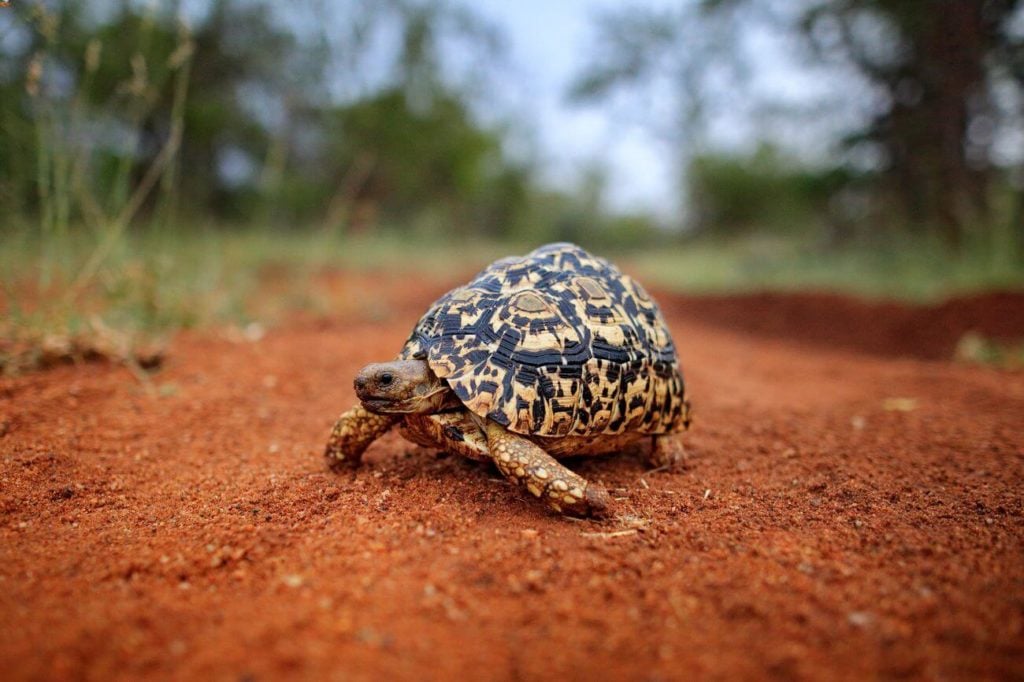
Shell rot is a particularly nasty condition that’s caused by fungal infections. It attacks the shell and can cause physical damage. In severe cases, the infection can start affecting the tortoise’s internal organs.
Metabolic bone disease occurs when the tortoise isn’t getting UV exposure. Without UV rays, the tortoise cannot synthesize calcium. This leads to bone and shell problems.
Exotic pet veterinarians can tackle these diseases. In most cases, they’re avoidable as well. This is why one of the most important parts of leopard tortoise care is monitoring the enclosure and staying on top of environmental conditions.
Keep the pen clean and disinfect every surface about once a month. Also, make sure your UV lamps are working at all times to avoid calcium-related problems. You might also want to consider adding some supplements to your pet’s diet.
Behavior & Temperament
Like most tortoises, this species is rather peaceful. They’re not known to purposely bite humans. When they feel threatened, they’re more likely to retreat into their shell than go on the attack.
You might see some light aggression between males during the mating season, but the behavior is very benign. For the most part, they are docile. This means you can usually keep multiple males and females together without any problems.
Throughout the day, your leopard tortoise will graze and bask to their heart’s content. They’re easy-going animals that live calm lives!
Handling
Leopard tortoises aren’t keen on handling, but they can become a bit more tolerant of it once they build some trust with humans.
However, it’s still important to keep handling to a minimum. Frequent handling will only cause undue stress on the animal.
Appreciate these creatures from afar and leave the handling to times when it’s absolutely necessary (like enclosure maintenance or medical treatments).
Conclusion
Leopard tortoise care requires a bit more work than many other popular pet tortoises. However, it’s not so bad once you get the hang of it.
And boy is it worth it!
These reptiles make fantastic pets, and the bond you’ll build with them over their long lives can’t be matched by many other animals.
If you have questions about anything we covered in this care sheet, feel free to ask us directly!

